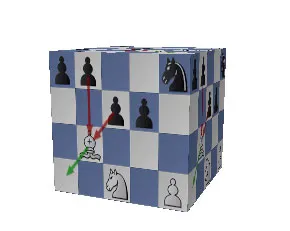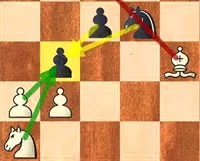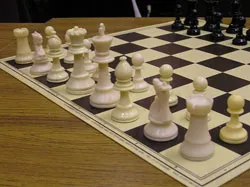Openings
In his last article chessbibliophile offered a review of the site ChessPublishing.com: From this month he would discuss selected opening updates from the site-Ed.
Here is another (last week I covered Elephant’s Trap) good trap to have in your arsenal. It is called Mortimer Trap. It occurs in the one of the most commonly played chess openings called Ruy Lopez. Black plays a passive move with its Knight in order to trick White to accept the pawn which would […]
Elephant Trap is the trap for White that occurs in a popular variation of Queen’s Gambit Declined. White pins the Black’s f6 knight and captures the d5 pawn not realizing that it’s actually them who blundered and about to lose a piece, and most likely a game. It is a ‘must to know’ trap to […]
Today we’ll talk about something different rather than Rook Endgames that I was covering lately. If not endgames, than what, you may ask? Right, we are going to talk about openings, which is something opposite to the endgames. Don’t get disappointed yet since I’m not going to cover the openings you know and play on […]
This article is a continuation of Rapid Chess Improvement: Evaluation of Positions, which covered the main things a chess player needs to work on in order to improve the game. Opening repertoire is a very tricky thing to work on. You do not want to spend too much time studying opening lines which you may […]
The Scotch Game received its name from a correspondence match in 1824 between Edinburgh and London. Popular in the 19th century, by 1900 the Scotch had lost favor among top players because it was thought to release the central tension too early and allow Black to equalize without difficulty. However, this opening is still very […]
It is named after the famous 18th century player François-André Danican Philidor, who advocated it as an alternative to the common 2…Nc6. Today it is known for being a solid, but rather passive, opening for black. It is rarely seen in top level play. Philidor’s main idea behind the move 2…d6 was of course to […]
Italian opening is one of the oldest chess openings. It was analyzed by the greatest Italian masters in XVI century. The main idea for white is formation of ideal pawn center by playing c2-c3 and pushing d2-d4. Black has a weak f7 square, which white using as a target for its attacks.
The opening was developed by Russian master Alexander Petrov. The main idea of Petrov’s Defense (or so called Russian game) is not to defend e5 pawn, but to symmetrically attack white’s e4 pawn. This is strategically rich opening and it’s being used by top player around the globe even these days.
The two knight defense usually leads to a sharp game. Sacrifices are very common here for black as well as for white. This opening is played at the very top level even today.















